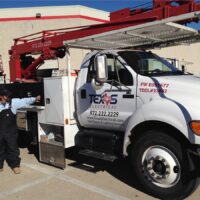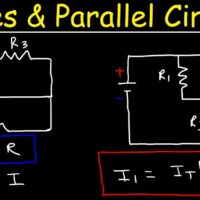A Residual Current Device (RCD) quickly disconnects a circuit if it detects an imbalance between live and neutral wires. This protects against electrical shocks and fires.
An RCD is crucial for electrical safety in homes and workplaces. It constantly monitors the flow of electricity in a circuit. If it detects an imbalance, it cuts off the power almost instantly. This rapid action can prevent severe electric shocks and reduce the risk of electrical fires.
RCDs are especially important in environments where electrical equipment is frequently used. They provide an extra layer of protection beyond traditional circuit breakers. Installing an RCD can be a lifesaving decision, safeguarding both people and property from electrical hazards.
Credit: www.himel.com
Introduction To Residual Current Devices
Residual Current Devices (RCDs) are vital for electrical safety. They help in detecting and preventing electrical faults. Understanding RCDs can protect your home and loved ones.
What Is An Rcd?
An RCD is a safety device that cuts off electricity. It does this when it detects a fault. This prevents electric shocks and reduces fire risks.
| Feature | Description |
|---|---|
| Detection | Identifies electrical faults |
| Reaction | Cuts off power quickly |
| Protection | Prevents shocks and fires |
Importance In Modern Safety
RCDs are crucial in today’s homes. They offer an extra layer of protection. This is especially important with more gadgets in use.
- Protects against electric shocks
- Reduces the risk of electrical fires
- Enhances overall home safety
Many countries now require RCDs in new homes. This shows their importance in modern safety standards.
How Rcds Work
Residual Current Devices (RCDs) are crucial for electrical safety. They protect you from electric shocks. Understanding their operation helps us appreciate their importance.
Detection Of Fault Currents
RCDs detect fault currents quickly. They monitor the flow of electricity through a circuit. If there is an imbalance, it means current is leaking somewhere.
This leakage could be due to a damaged wire or a faulty appliance. The RCD detects the difference in the current. It senses the mismatch between the live and neutral wires.
Automatic Disconnection
Once an imbalance is detected, the RCD acts immediately. It disconnects the circuit in milliseconds. This rapid response prevents serious electric shocks.
Here is a simple flow of how it works:
- Electricity flows normally through the circuit.
- The RCD monitors the current continuously.
- A fault causes a current imbalance.
- The RCD detects the imbalance.
- The RCD disconnects the circuit instantly.
This automatic disconnection is vital. It ensures safety by cutting off dangerous currents. Everyone in the home stays safe from electrical hazards.
| Step | Description |
|---|---|
| Detection | RCD detects current imbalance. |
| Action | RCD disconnects the circuit. |
| Result | Prevents electric shocks. |
RCDs are essential for every home. They provide an extra layer of protection. Ensure you have them installed to keep your family safe.
Types Of Rcds
Residual Current Devices (RCDs) are essential for electrical safety. They protect against electric shock and reduce the risk of fire. There are several types of RCDs, each suited for different applications.
Fixed Rcds
Fixed RCDs are installed in a fixed location, often in your main switchboard. They provide protection for a specific area or circuit in your home.
| Advantages | Disadvantages |
|---|---|
|
|
Portable Rcds
Portable RCDs are mobile devices. They are plugged into a power outlet and then your device is plugged into the RCD.
These are ideal for temporary use or outdoor activities. They can be easily moved and used with different devices.
- Low cost
- Easy to use
- No installation needed
Portable RCDs are perfect for DIY projects and gardening tools. They provide immediate protection against electrical faults.
Choosing the right type of RCD depends on your specific needs. Both fixed and portable RCDs offer valuable protection for different situations.
Installation And Maintenance
Installing and maintaining a Residual Current Device (RCD) ensures safety and functionality. Proper techniques and regular checks are crucial for optimal performance. This section will guide you through the steps.
Proper Installation Techniques
Proper installation of an RCD involves several key steps. Following these steps ensures the device works correctly.
- Turn off the power supply to avoid any electrical hazards.
- Identify the main power inlet where the RCD will be installed.
- Connect the live and neutral wires to the RCD terminals.
- Secure the RCD in the designated location.
- Check all connections to ensure they are tight and secure.
- Restore the power supply and test the device.
Following these steps ensures your RCD is installed correctly. This reduces the risk of electrical faults.
Regular Testing And Maintenance
Regular testing and maintenance are vital for an RCD’s effectiveness. Regular checks help identify and fix issues early.
- Press the test button on the RCD to ensure it trips.
- Inspect the device for any physical damage or wear.
- Check all wiring connections for tightness.
- Replace any damaged or worn components immediately.
- Record the test results in a maintenance log.
Regular maintenance extends the life of your RCD. It also ensures your safety and the device’s reliability.
Common Applications
Residual Current Devices (RCDs) are essential for electrical safety. They protect against electric shock and fire caused by earth faults. These versatile devices have numerous applications across different sectors.
Residential Use
In homes, RCDs provide critical safety. They protect family members from electric shocks. Common installations include:
- Bathrooms: Protects against water-related electrical hazards.
- Kitchens: Secures appliances like microwaves and refrigerators.
- Outdoor Areas: Safeguards garden equipment and outdoor lighting.
An RCD in the main consumer unit can cover the entire home. This is vital for overall household safety.
Commercial And Industrial Use
In commercial and industrial settings, RCDs prevent severe electrical accidents. They are used in:
- Workshops: Ensures safety of power tools and machinery.
- Offices: Protects computers, printers, and other electronic devices.
- Factories: Secures heavy machinery and assembly lines.
Regular maintenance checks are essential in these environments. This ensures the RCDs function correctly and provide adequate protection.

Credit: www.youtube.com
Benefits Of Using Rcds
Residual Current Devices (RCDs) offer numerous advantages. They are essential for electrical safety. RCDs protect against electric shocks and reduce fire risks.
Enhanced Safety
RCDs detect electrical faults quickly. They cut off the power instantly. This prevents electric shocks. It also reduces the risk of electrical fires. Enhanced safety is the primary benefit of using RCDs.
RCDs are life-saving devices. They protect against fatal accidents. Installing RCDs ensures a safer living environment. They are effective in both homes and workplaces.
Cost-effectiveness
RCDs are cost-effective solutions. They prevent costly damages. By cutting off power during faults, they protect appliances. This reduces repair costs.
Investing in RCDs saves money over time. They reduce the risk of fire damage. This can save on insurance premiums. Cost-effectiveness is another key benefit of RCDs.
| Feature | Benefit |
|---|---|
| Quick Fault Detection | Prevents Electric Shocks |
| Power Cut-off | Reduces Fire Risk |
| Protects Appliances | Saves Repair Costs |
| Reduces Insurance Premiums | Long-term Savings |
Enhanced safety and cost-effectiveness make RCDs essential. They are a smart investment for any property.
Potential Issues And Solutions
Residual Current Devices (RCDs) are crucial for electrical safety. They protect against electric shocks and fire hazards. Despite their importance, RCDs can face some issues. Understanding these problems and their solutions ensures optimal performance.
Nuisance Tripping
Nuisance tripping happens when an RCD trips without a real fault. This can be frustrating and inconvenient.
Common causes of nuisance tripping include:
- Moisture in electrical boxes
- Faulty appliances
- Overloaded circuits
Solutions to address nuisance tripping:
- Check for moisture and dry it out.
- Inspect and repair or replace faulty appliances.
- Ensure circuits are not overloaded.
Compatibility Issues
Compatibility issues can arise with certain types of RCDs and electrical systems. Not all RCDs work well with all electrical setups.
Common compatibility problems include:
- Incompatibility with older wiring systems
- Issues with certain types of loads, like motors
- Problems with other protective devices
Solutions for compatibility issues:
- Ensure RCDs match the type of wiring system.
- Use RCDs designed for specific loads, like motors.
- Consult an electrician for proper device coordination.
Future Trends In Rcd Technology
Residual Current Devices (RCDs) are evolving rapidly. These devices offer better safety and usability. Let’s explore the future trends shaping RCD technology.
Smart Rcds
Smart RCDs represent a significant leap forward. They connect to the internet and provide real-time data. This connection helps in monitoring electrical systems remotely.
Smart RCDs can send alerts to your smartphone. These alerts notify you of potential electrical faults. This early warning system enhances home safety significantly.
| Feature | Benefit |
|---|---|
| Real-time Monitoring | Immediate fault detection |
| Remote Control | Manage devices from anywhere |
| Data Analytics | Improved system performance |
Integration With Smart Homes
Integration with Smart Homes is another trend. Smart homes are becoming more popular. Integrating RCDs with smart home systems is seamless.
Smart RCDs can communicate with other smart devices. This communication allows for coordinated responses to electrical issues. For example, they can work with smart thermostats to manage energy use better.
Here are a few benefits of this integration:
- Enhanced Safety: RCDs can shut down power in case of faults.
- Energy Efficiency: Smart systems can optimize power usage.
- User Convenience: Control your devices through a single app.
As technology advances, RCDs will become smarter and more integrated. This evolution will make our homes safer and more efficient.

Credit: en.wikipedia.org
Frequently Asked Questions
What Is A Residual Current Device (rcd)?
A Residual Current Device (RCD) is a safety switch. It protects against electric shocks by detecting imbalances in electrical currents. If a fault is detected, it quickly cuts off the electricity supply.
How Does An Rcd Work?
An RCD monitors the electrical current flowing through a circuit. If it detects an imbalance, it disconnects the circuit. This action prevents electric shocks and reduces the risk of electrical fires.
Why Is An Rcd Important?
An RCD is crucial for electrical safety. It protects against electric shocks and reduces the risk of electrical fires. It’s a vital component in modern electrical systems.
Where Should Rcds Be Installed?
RCDs should be installed in residential, commercial, and industrial settings. They are commonly found in fuse boxes or distribution boards. They should protect circuits with potential human contact.
Conclusion
A Residual Current Device (RCD) ensures electrical safety in homes and workplaces. It detects faulty currents and prevents electrical shocks. Installing RCDs can save lives and protect property. Make safety a priority by using RCDs in your electrical systems. Stay safe, stay protected.



